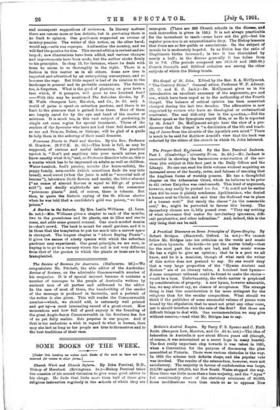Britain's Austral Empire. By Percy F. S. Spence and C.
Firth Scott. (Sampson Low, Marston, and Co. £4 4s. net.)—The idea of federation in Australia is now about fifteen years old (though, of course, it was entertained as a secret hope in many hearts). The first really important step towards it was taken in 1891, when a Convention for the purpose of discussing the plan assembled at Victoria. There were various obstacles in the way. In 1895 the scheme took definite shape, and the popular vote was invoked. The results of the referendum, however, were not satisfactory. The majority in favour of confederation was large, 213,730 against 106,398, but New South Wales stopped the way. Here there was little more than a bare majority, and the "Ayes" fell considerably short of the statutory minimum of 80,000, Some modifications were then made so as to appease New
South Wales's susceptibilities. At the second referendum the numbers were 376,035 against 131,185. Queensland had by this time come in. We-tern Australia still held out, but came in while the enabling Bill was before the Imperial Parlia- ment. New Zealand still remains outside. There was some difficulty about the Final Court of Appeal, but this was smoothed away by tact and mutual concession. (It is a discreditable proof of the way in winch hatred of Mr. Chamberlain has perverted polities that when the Court of Appeal matter was under dis- cussion leading members of the Radical party, both in Parlia- ment and in the Press, accused this statesman of " patting a deliberate slight upon the Colonies.") Mr. Scott tells the story of these events in the volume of letterpress, while the illustrative portraits, including the Duke of York, Lord Salisbury, Mr. Chamberlain, Lord Hopetoun, and the chief Colonial statesmen, occupy the second. Some other pictures, pointing the contrast between the new and the old, as a liner of to-day and Captain Cook's ship • he Endeavour,' have been added. It is a work worthy of the great occasion which it commemorates.



















































 Previous page
Previous page